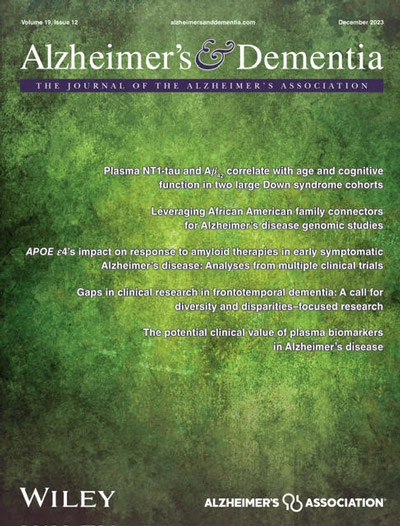Clinician type and care setting for treatment of Medicare beneficiaries with dementia
Abstract
INTRODUCTION
Coordinating care for people living with dementia (PLWD) requires understanding which clinicians deliver care and the settings of that care.
METHODS
We used the Medicare Carrier file to characterize the settings in which clinicians deliver care to PLWD, clinician types providing care, and whether clinicians record a dementia diagnosis.
RESULTS
A total of 1,934,318 PLWD received care from 783,225 unique clinicians in 2019; PLWD saw a median of eight clinicians (interquartile range 5, 14). The most common settings were office (74.8% of PLWD), emergency room (63.9%), inpatient hospital (52.1%), and skilled nursing facility (37.1%). In addition, 87.0% of PLWD received care from a primary care physician, 62.9% from a nurse practitioner, and 33.1% from a physician assistant. Of the clinicians providing care, 2.4% are psychiatrists, 1.7% are neurologists, and 0.5% are geriatric subspecialists.
DISCUSSION
Care for PLWD must be coordinated across multiple clinicians and settings, recognizing that few PLWD receive psychiatry, neurology, or geriatric subspecialty care.
Highlights
- In 2019 the median Medicare beneficiary living with dementia saw eight different clinicians.
- Care of beneficiaries living with dementia is distributed across settings, with large percentages seen in each of the office, emergency room, inpatient hospital, and skilled nursing settings.
- Primary care physicians and nurse practitioners are the clinician types seen by the largest percentage of beneficiaries living with dementia.
- Geriatric subspecialist physicians account for less than 1% of the clinicians that provide care to beneficiaries living with dementia.


 求助内容:
求助内容: 应助结果提醒方式:
应助结果提醒方式:


